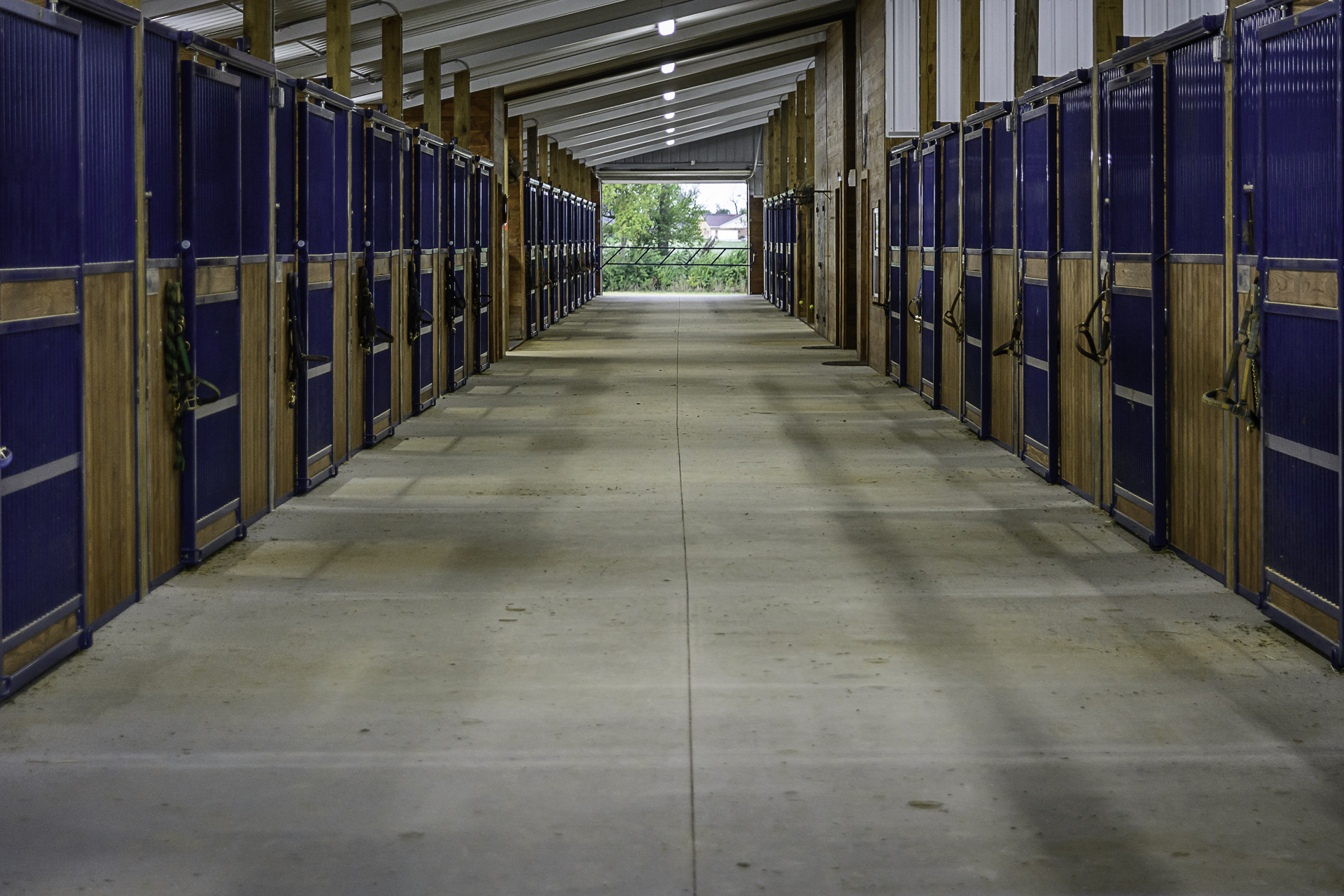By keeping their properties in the best shape possible, NRHA Professionals can make good first impressions on clients and preserve the confidence of their existing customers.
By Kristin Pitzer

Imagine, as a prospective client, visiting training facilities for a futurity prospect. One facility is immaculate: the floors are swept, tack is put away, and the overall aesthetic is just nice to look at. Another is dilapidated, with broken fencing, unkempt landscaping, and rusting equipment abandoned where it last stopped. Which would you pick to leave your prized investment?
It may seem shallow to some people, but the curb appeal of a training facility is very important in the equine business. The grounds don’t necessarily have to be elaborate—simply making the effort to maintain a facility in top shape can leave a nice impression. No matter if you’re a multimillion-dollar rider or an up-and-comer, having an aesthetically pleasing facility can help gain new clients and give a sense of security to those who are already customers.
In this three-part series, NRHA Professionals Bob Avila, Shannon Quinlan Hill, Robin Schoeller, and Mark and Shannon Rafacz share their thoughts on these topics:
Part 1: First Impressions Count
Part 3: Function Over Form
Worth the Effort
Whether a facility is owned or rented by a trainer, it takes money and time to maintain its appearance. Those are both investments that’ll pay out in dividends, though, when it comes down to client satisfaction.
“It’s a lot; there’s a big budget that needs to be put aside for that,” Schoeller said. “Mowing the grass, keeping the mower serviced and fueled up, weed eating—just to buy all that equipment and keep it serviced and running, that’s a big expense. And you can’t forget about the labor. You either have to do it yourself or you have to hire somebody who does it all for you. So that’s an expense, also.”
Rafacz said she has a code for repairs and maintenance on her taxes, and general upkeep alone can cost around $10,000 to $15,000 on their 10-acre property. That doesn’t include special projects, like adding on a viewing deck to the arena.
“Our barn is wooden, so everything is individually board-built, and we sometimes have to replace those,” Rafacz said. “We’re at that 12-year mark at our property, so it’s definitely time where things start to have to be revamped a little bit. But when you live on a farm, you’re going to have fence boards down, things kicked down, horses chew their way through in the barn, so I think that’s kind of average.”
Rafacz and Schoeller said it’s a 24/7 job maintaining their facilities, and most of the time, the work must be done after their day jobs training horses. Rafacz said Mark is often out past dark trying to finish up tasks like tree trimming and fence fixing after a full day of riding.
“For the most part, it never ends, but you have to love that about being a property owner and know that,” Rafacz said. “Once you finish one project, you just move onto the next.”
For Schoeller, who designed his property with the help of his father and sister-in-law, time is put aside on Saturdays to get projects done around the farm. That’s after spending all week long doing minor maintenance tasks every day.
“We always pick a couple of tasks we want to get done,” Schoeller said. “It’s sometimes not possible to do it all, but we’ll pick a couple, and we might clean the tack room on Saturday and wipe the stall fronts off the next Saturday. I take really good care of my equipment; it’s a lot of value that’s sitting out there.”
The work and costs pay off, though, when clients can feel secure leaving their horses with a trainer. And for trainers somewhat off the beaten path, that word of mouth might give them an advantage when attracting clients outside the hotbed of reining activity.
“I think it’s really important [to show you can take care of your property],” Avila said, who lived in Oregon for a while and said it could be a challenge drawing clients to his place. “I think the farther you are out of the Mecca, the more important it is to work at making sure you cross all the Ts and dot all the Is, as far as taking care of your place and putting a little more effort into your work. I think sometimes really being in the heart of it lets people get a little bit lazy because they have it easier.”
“Down in Texas, everybody has big farms,” Quinlan added. “They’re nice, pretty, and well-maintained. Up here, that’s not quite as common, and reiners aren’t as common in general. There’s not too many big, functional training facilities, so I think the fact that we can offer one is huge.”
Read the rest of this article at the links above.



